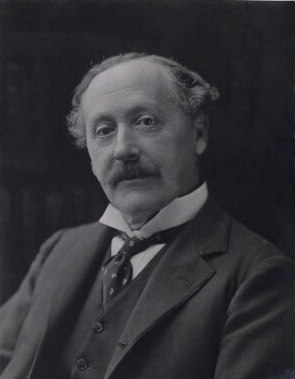Related Research Articles

The Union of South Africa was the historical predecessor to the present-day Republic of South Africa. It came into existence on 31 May 1910 with the unification of the Cape, Natal, Transvaal, and Orange River colonies. It included the territories that were formerly a part of the South African Republic and the Orange Free State.

Field Marshal Jan Christian Smuts, was a South African statesman, military leader and philosopher. In addition to holding various military and cabinet posts, he served as prime minister of the Union of South Africa from 1919 to 1924 and 1939 to 1948.

The Congress of South African Trade Unions is a trade union federation in South Africa. It was founded in 1985 and is the largest of the country's three main trade union federations, with 21 affiliated trade unions.

The Southern African Customs Union (SACU) is a customs union among five countries of Southern Africa: Botswana, Eswatini, Lesotho, Namibia and South Africa. Its headquarters are in the Namibian capital, Windhoek. It was established in 1910.
The Communist University of the Toilers of the East (KUTV) was a revolutionary training school for important communist political leaders. The school operated under the umbrella of the Communist International and was in existence from 1921 until the late 1930s. Part of the university was split into the Moscow Sun Yat-sen University.

The Union Navy was the United States Navy (USN) during the American Civil War, when it fought the Confederate States Navy (CSN). The term is sometimes used carelessly to include vessels of war used on the rivers of the interior while they were under the control of the United States Army, also called the Union Army.
The Industrial and Commercial Workers' Union (ICU) was a trade union and mass-based popular political movement in southern Africa. It was influenced by the syndicalist politics of the Industrial Workers of the World, as well as by Garveyism, Christianity, communism, and liberalism.

African Americans, including former slaves, served in the American Civil War. The 186,097 black men who joined the Union Army included 7,122 officers and 178,975 enlisted soldiers. Approximately 20,000 black sailors served in the Union Navy and formed a large percentage of many ships' crews. Later in the war, many regiments were recruited and organized as the United States Colored Troops, which reinforced the Northern forces substantially during the conflict's last two years. Both Northern Free Negro and Southern runaway slaves joined the fight. Throughout the course of the war, black soldiers served in forty major battles and hundreds of more minor skirmishes; sixteen African Americans received the Medal of Honor.

On 14 January 1994, the United Nations Security Council unanimously adopted resolution 894 which discusses various aspects relating to the upcoming South African General Elections. This occurred after the council recalled resolutions 765 (1992) and 772 (1992) on South Africa.

Herbert John Gladstone, 1st Viscount Gladstone, was a British Liberal politician. The youngest son of William Ewart Gladstone, he was Home Secretary from 1905 to 1910 and Governor-General of the Union of South Africa from 1910 to 1914.

United Nations Security Council Resolution 1663, adopted unanimously on March 24, 2006, after recalling previous resolutions on the situation in Sudan, particularly 1627 (2005) and 1653 (2006), the Council extended the mandate of the United Nations Mission in Sudan (UNMIS) for six months until September 24, 2006.
During the late 19th century and early 20th century, a number of South African and British political leaders advocated for a Greater South Africa. This irredentism can be regarded as an early form of Pan-Africanism, albeit strictly limited to White Africans of European ancestry.

The Union of South Africa Commemoration Medal is a military and civil commemorative medal which was awarded to commemorate the opening of the first Union Parliament by the Duke of Connaught and Strathearn in 1910. It may be considered as the first of many independence medals which were instituted throughout the Commonwealth during the 20th century.
The South African Trades Union Congress (TUC) was a national trade union federation in South Africa.
The South African Railways and Harbours Union was formed by black workers of the South African Railways and Harbours Administration after they had been expelled from the National Union of Railway and Harbour Servants.
The Council of Non-European Trade Unions (CNETU) was a national trade union federation bringing together unions representing black African workers in South Africa.
The South African Congress of Trade Unions (SACTU) was a national trade union federation in South Africa.
The Food and Canning Workers' Union (FCWU) was a trade union representing food processing workers in South Africa. Its members were mainly based in the Western and Eastern Cape. It was affiliate with the African Food and Canning Workers' Union (AFCWU).

The Southern African Vexillological Association (SAVA) was formed in November 1990 to promote vexillology in Southern Africa. Members of the association are drawn mainly from flag manufacturers, collectors, military historians and generally anyone with an interest in flags. SAVA became a member of the International Federation of Vexillological Associations (FIAV) at the 14th International Congress of Vexillology held in Barcelona in 1991 and was the host of the 17th International Congress of Vexillology which was held in Cape Town in August 1997.

Daisy Dorothea Solomon (1882–1978) was posted as a human letter in the British suffragette campaign using a quirk in the postal system to approach the Prime Minister who would not receive a delegation of women demanding the right to vote. Solomon was secretary to suffragette groups and imprisoned for protest, and went on hunger strike.
References
- ↑ Villa-Vicencio, Charles (1996). The Spirit of Freedom: South African Leaders on Religion and Politics. University of California Press. p. 27. ISBN 9780520916265 . Retrieved 24 January 2016.
- ↑ Kiloh, Margaret; Sibeko, Archie (2000). A Fighting Union. Randburg: Ravan Press. p. 11. ISBN 0869755277.